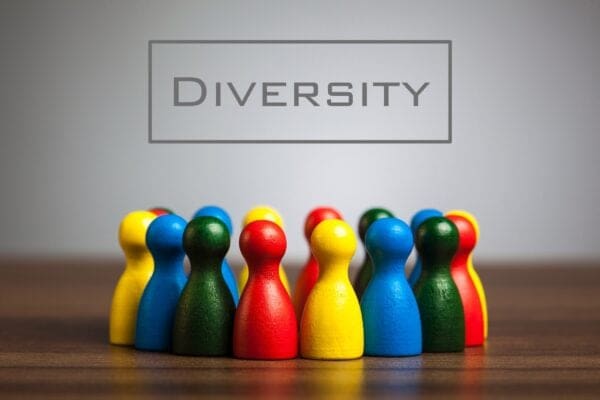Why Do You Need an Employee Reward System?
The employee reward system is essential for any organisation for various reasons. They can improve employee productivity, motivation, and satisfaction. Not only that, but they can also strengthen the company culture and help retain talented employees. Even more, it helps with employee recruitment and creates a sense of competition.
Hence, in this blog post, we will discuss the different types of employee reward systems, their importance, and how you can apply them to your own business.
What is an Employee Reward System?
A broad definition is:
An employee reward system is a set of guidelines and processes that an organisation uses to assess employee performance and provide rewards accordingly. It can also be called an employee recognition system or reward scheme.
The purpose of employee rewards is to motivate employees to achieve company objectives and improve their performance. Employee rewards can take many forms, including financial bonuses, paid time off, company stock, and more.
The HR department usually manages the employee recognition system, because it is closely intertwined with the appraisal and performance management process.
Now there are several types of employee reward systems, and the most appropriate one will depend on the organisation’s goals and values. The most common reward schemes are financial, recognition-based, and benefits-based.
Rewards vs Recognition: The Difference
It is important to note that employee rewards and recognition are two different things. Rewards are granted to employees to acknowledge their accomplishments and generally come in the shape of bonuses or stock options. Conversely, employee recognition is bestowed upon employees for their dedication and usually manifests as awards or certificates.
Businesses should use both employee rewards and employee recognition to create a positive and effective work environment because, whilst they are two different things, they are both critical. Effective use of both rewards and recognition will help to improve employee morale, motivation, and productivity. Also, it will help to create a more positive and cohesive work environment.
For these reasons, both terms are used synonymously in this article.

>> Customer Service Coaching Cards <<
Why is a Reward Scheme Important?
Companies with robust compensation reward management systems tend to have more engaged and productive employees and employee engagement is critical to business success. A study by Gallup found that companies with high employee engagement outperformed their peers by 147% in earnings per share. Furthermore, they also had lower employee turnover and absenteeism rates.
Employee rewards are essential for any organisation for a variety of reasons. They can improve employee productivity, motivation, and satisfaction. Not only that, but they can also strengthen the company culture and help retain talented employees.

To summarise, employee rewards are essential because they:
- Improve employee productivity.
- Enhance employee motivation.
- Increase employee satisfaction.
- Encourage employee retention.
- Strengthen company culture.
- Help with employee recruitment.
- Create a sense of competition among employees.
Sticky Learning ® is 7 times more effective than 1-day training courses. Plus, you will get a Chain of Evidence proving your Return on Investment. Discover soft skills training that changes behaviours long term.

Goals of Employee Reward Management
Several goals can be accomplished by implementing a robust employee reward system. These goals are always aligned with the company’s objective. Hence, it is necessary to identify the company objectives before developing rewards programs.
Some of the common goals of employee rewards are:
#1- Employee Motivation
The most crucial goal of employee rewards is to motivate employees to achieve company objectives. Recognition and financial incentives are the two most popular ways to achieve this goal.
Maslow’s Hierarchy of Needs illustrates the importance of employee motivation. It states that employee motivation is a result of meeting their needs. The most basic requirement is physiological, which includes food and shelter. The next level is safety, including job security and health insurance.
The third level is social, which includes things like belonging and camaraderie. The fourth level is esteem, which includes things like respect and recognition. The final level is self-actualisation, or the need to reach one’s full potential.
Famous American psychologist Frederick Herzberg suggested that it is crucial to find what motivates the employees internally and utilise it. He proposed the ‘Two Factor Theory of Motivation’, which states that two factors contribute to employee motivation: hygiene factors and motivators. Further, Herzberg proposed that employee motivation can increase by focusing on motivators, including recognition, responsibility, and opportunity for growth.
#2- Employee Productivity
Employee productivity is another goal that can be accomplished with employee rewards. By providing employees with financial incentives, companies can encourage them to increase their productivity. It happens because the employees will be motivated to work harder if they know that they will be rewarded for their efforts.

Companies can achieve their business objectives more efficiently and effectively with increased productivity. It would increase profit margins and competitive advantage, thereby ensuring the organisation’s long-term success.
Also, the productivity of employees depends on their level of engagement. Employee engagement can be described as how committed employees are to their work and how willing they are to put in extra effort to achieve company goals.
A study by Gallup found that companies with engaged employees are more productive and have lower employee turnover rates. Additionally, they also have higher customer satisfaction scores and higher levels of profitability. Thus, it is evident that employee rewards can help improve employee productivity, which can help companies achieve their business objectives.
#3- Employee Retention
Another advantage of employee rewards is that they can encourage employee retention. To achieve this goal, companies use benefits-based rewards and long-term incentives. By providing employees with these benefits-based rewards, companies can make them feel valued and appreciated, and therefore they are more likely to stay with the company longer.
Employee retention can also be encouraged using long-term incentives. These incentives are usually given to employees who have been with the company for a certain period and are generally in the form of stock options or bonuses.
By providing employees with long-term incentives, companies can show them that they are committed to their development and growth. This realisation would make them more likely to stay with the company for longer.
#4- Employee & Company Goals Alignment
Employee reward systems should also help to align employee and company goals because employee rewards can incentivise employees to achieve company goals.
For example, if a company’s goal is to increase sales, it can offer employees a bonus for every sale. This would incentivise employees to increase their sales, which would help the company achieve its goal.
By aligning the employee’s goals with the company’s goals, businesses can ensure that their employees work towards the same objectives. This can lead to a more cohesive and effective work environment. It would also help the employees feel that their work is meaningful and that they are contributing to the company’s success.
#5- Maintain Compliance
Maintaining compliance is another benefit of an employee reward system, as it can encourage employees to comply with company policies and procedures. Employees are more likely to follow the rules and regulations if they know that they will be rewarded.
For example, suppose a company has a policy that employees must arrive at work on time. In that case, it can offer employees a bonus for every day that they arrive on time. This would incentivise employees to reach work on time, which would help the company maintain compliance.

#6- Remain Ethical
Employee reward schemes can also help to encourage employees to remain ethical. This is because employees will be more likely to adhere to ethical standards if they know that they will be rewarded.
For example, imagine a company has a policy that employees must not engage in fraudulent activities. It could offer employees a bonus for every month that they adhere to the procedure. By encouraging employees to remain ethical, businesses can ensure that their workplace is free from fraud and corruption, which would lead to a more positive and effective work environment.
Developing an Appraisal and Reward System
When developing an employee appraisal and reward system, businesses should keep the following factors in mind:
- The objectives of the system.
- The company budget.
- The company culture.
- The preferences of the employees.
The employee appraisal and reward system’s objectives need to align with the company’s goals. It must remain affordable and sustainable, while also being tailored to the company culture and the preferences of the employees.
Furthermore, when designing the employee appraisal and reward system, businesses should consider what rewards they would like to offer. For example, some companies may provide financial incentives, whilst others may prefer to offer non-financial rewards.
Equally, some businesses may also choose to offer both financial and non-financial rewards. When selecting the types of bonuses to offer, companies should consider what would be most motivating for their employees.
Companies should also consider the most affordable and sustainable rewards for the company. Once companies have designed an employee appraisal and reward system, they should proceed to implement and monitor its effectiveness.
The employee appraisal and reward system is a tool that businesses can use to improve employee morale, motivation, and productivity. When designed and implemented correctly, it can help companies create a more positive and effective work environment.
Common Types of Effective Reward Systems for Employees
Businesses can utilise an employee reward system as a tool to enhance employee productivity, foster employee retention, align employee and company goals, and motivate employees to adhere to company policies and procedures. When used properly, the employee reward system can be a powerful tool to help businesses achieve their objectives.
There various common types of employee rewards systems are:
1. Bonus
Bonus programs are employee reward systems that provide employees with a financial reward for meeting or exceeding predetermined goals. These programs are typically based on employee performance, but they can also be based on company profitability or other factors.

2. Profit-sharing
Profit-sharing is an employee reward system that provides employees with a financial reward based on the company’s profitability. These programs typically provide employees with a percentage of the company’s profits. However, they can also be based on the employee’s individual performance.
3. Commission
The commission is an employee reward system that provides employees with a financial reward for each sale. Commission programs typically vary from company to company however, they can be based on a fixed percentage of the sale price or a variable percentage of the sale price.
4. Recognition Programs
Recognition programs are employee reward systems that provide employees with recognition for their accomplishments. They can take many different forms, but they typically involve some form of public recognition, such as an employee of the month award.
5. The Employee of the Month
The Employee of the Month program is an employee recognition program that provides employees with public recognition for their accomplishments. These programs typically involve some form of plaque or certificate that the employee can display, which then gives them a sense of pride, and motivation to continue reaching their goals.
6. Gift Cards
Another option for rewards involves using gift cards. These employee reward systems offer a financial incentive that employees can use to buy items at specific stores or online platforms. These gift cards are available from a variety of sources, including retailers and online websites like Amazon.
7. Paid Time Offs
Paid time off is an employee reward system that provides employees with a financial reward for time off. Usually, it is used for vacation, personal days, or sick days.
8. Variable Pay
Another reward system is variable pay which provides employees with a financial reward that varies based on their performance. These programs can be based on various factors, such as employee productivity, company profitability, or individual performance.
9. Company Stocks
Stock options are employee reward systems that allow employees to purchase company stock at a discounted price. These stock options can motivate employees to stay with the company for longer.

10. Benefits-in-kind
Benefits-in-kind is a non-monetary reward system that provides employees with non-cash benefits, such as a company car or health insurance. These can motivate employees to stay with the company for a more extended period. Such benefits ensure that employee satisfaction is high, and they feel motivated to work harder for the company.
Employee Reward and Recognition Platforms
We could write an entire article just on this topic of platforms you can use for employee reward and recognition. (Perhaps, watch our blog for that future article!). However, what we will do here is give a brief summary of some of the most popular platforms out there.
When looking into these, I found that each of them comes with MANY advantages. Obviously, depending on your company’s size, needs, and budget, different platforms will suit different organisations. We’ll do our best to give the important points to give you a taste.
#1: Nectar
This platform allows for 360-degree reward and recognition from anywhere at any time. Key elements include:
- Peer-to-peer and manager-to-employee recognition.
- Suitable for companies of small to medium sizes.
- A large variety of rewards including Amazon products, company swag and charity donations.
- One of the most flexible platforms out there to meet company needs.
#2: WorkTango
Best suited for smaller companies, this tool has the following features:
- Links recognition and performance management.
- Encourages growth and development through rewards and recognition.
- Has a Global Reward catalogue that creates better personalised rewards.
- Real-time recognition posts that boost morale and engagement.
#3: Motivosity
This platform has the following benefits:
- Direct links to specific goals and targets.
- Boosts productivity and performance.
- Customised dashboard for tracking progress.
- Can be used for individual and group recognition.
#4: Awardco
This tool is great for the following reasons:
- Suits any size company with 100+ employees.
- Very customised to give rewards that count.
- Can meet any budget needs.
- Amazon Business integration makes rewards even more enjoyable.
- Automates birthdays, anniversaries and other milestones
#5: Bonusly
Another platform that really suits all sizes of companies. Here are some of their features:
- Anyone can recognise and praise anyone else in the company.
- Fast and fun to recognise others.
- Has a monthly allowance feature giving anyone the chance to recognise others.
- Automates birthday and work anniversary celebrations
To know which suits your needs best, have more details looked through the sites of these and more platforms. That way, you have a better chance of finding the best platform for your team.
Next, let’s have a look at some companies that are recognised for having effective employee reward systems in action.
The Ones That Are Getting it Right

So, there are many companies out there that are making the right impact with their employee reward systems. We want to share a few of them with you now and let you see how they are making it work for their team and the company as a whole.
First, we will look at Zappos. Next, we will cover Cisco. Then, we will look at how Disney drive reward in their company.
#1: Zappos
Zappos, a subsidiary of Amazon, comes up on many lists I have researched about reward and recognition. In fact, I found it to be one of the most common that was featured again and again. So, what are they doing right?
First, they use peer-to-peer recognition. This is a great way to build team morale and support. Many of us, including leaders, appreciate when our peers recognise our efforts.
Next, they use their Zollar Program to make an impact. Here, their employees can earn Zollars (or Zappos Dollars) that can then be used to purchase great rewards at their Zollar Store.
Also, they have their Coworker Bonus Program. Imagine, you have the chance to share $50 with a colleague who stepped up and helped you out. What a lovely way to say thanks or keep up the good work.
By having all of these benefits and more, Zappos promotes better team spirit. Also, they really want to see that hard work is appreciated.
#2: Cisco
Here, I needed to include Cisco after seeing some of their amazing results in terms of employee engagement. Let’s see some of those results.
- Number 1 in Fortune 100 Best Companies to Work For® 2022.
- Number 1 in Fortune Best Workplaces in Technology™ 2022 (Large).
- Number 3 in Fortune Best Workplaces for Women™ 2022 (Large).
See, some really impressive results. This couldn’t be achieved without great employee engagement. But, how do they do it? Well, they invest money in making their rewards system a success. In fact, they invest 1% of their entire payroll budget to make it happen. And we can see the results.
In the Great Place to Work® 2021 Global Employee Engagement Study, 96% of Cisco’s employees consider it a great place to work. This is in comparison with 57% of employees at a regular company in the US. Now, that’s how you do it!
#3: Disney
Known for supporting their employees, Disney prides itself on offering numerous rewards for their employees. They use a variety of reward initiatives to recognise their staff. These include:
- Disney Legacy Award: Employees are nominated by their peers for the award.
- Disney Legends: Winners have their handprints showcased at Legends Plaza.
- #CastCompliments: formal recording when cast members get their names mentioned using the hashtag. Executive-level leaders monitor the same for recognition.
- Service and Lifetime Achievement Awards
All of these add up to make Disney well-known for their various reward systems.
Actually, there are many more companies out there doing what they can to support and recognise their employees. However, these came up time and time again on various lists. So, which approach might suit your company? Before you decide, have a look at some of the features every reward system should have.
Must-have Features of Company Reward System
So, the employee reward system that you implement for your company should have certain features to be effective.
Some of these features include:
1- Customisable Rewards
Here, the reward system that you apply should be customisable to fit your company’s needs. Therefore, tailor the rewards to match both the type of work your employees engage in and your company’s goals.
2- Flexible Delivery
Next, the employee reward system needs to include a flexible schedule that can adjust to accommodate your company’s evolving requirements. This schedule should be accommodating of changes in employee productivity and company goals.

3- Point-based Rewards
The employee recognition system should have a point-based system so that employees can accumulate points for their accomplishments. Then, individuals can redeem the points for rewards, such as gift cards, paid time off, or company stock.
4- Adjustable Approval Process
The customisation of the approval process for the employee reward system should align with the specific requirements of your company. Moreover, this approval process should accommodate changes in employee productivity and company goals.
Conclusion
The employee reward system is a vital part of any company. The design of the system should accommodate the company’s and employees’ needs, offering flexibility through a point-based structure and customisable rewards.
Remember, an effective employee reward scheme can increase employee satisfaction and motivation. That way, it will help improve the company’s overall performance. We can conclude that the employee reward system can be very valuable for any company when implemented correctly.
Updated: September 2023 by Ailish O’Rourke-Henriette




